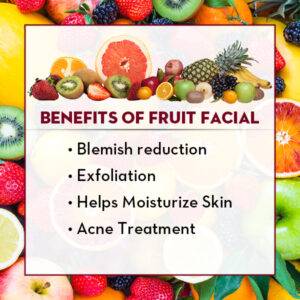This Site Is A Participant In The Amazon Services LLC Associates Program. We may earn money or products from Amazon or the companies mentioned in this post.
Radio frequency and high frequency facial are two types of treatments used in the field of skincare. Radio frequency treatment utilizes radio waves to stimulate collagen production and tighten the skin, while high frequency facial uses a low-level electrical current to treat acne, reduce inflammation, and improve overall skin health.
Both treatments have their own unique benefits and can be chosen based on individual skin concerns and goals.
:max_bytes(150000):strip_icc()/TerryAsselin_withproducts1-acec178015a34f7eab96279453f0a1ec.jpg)
Credit: www.byrdie.com
What Is Radiofrequency Facial?
Radiofrequency facial is a non-invasive beauty treatment that uses radiofrequency energy to stimulate collagen production. This innovative procedure works by heating the deeper layers of the skin and underlying tissues, triggering a natural response that tightens and firms the skin.
Radiofrequency facial is highly effective in reducing wrinkles, fine lines, and sagging, resulting in a more youthful appearance. By promoting collagen synthesis, it improves skin elasticity and texture, making it smoother and more radiant. This treatment is suitable for all skin types and can be used on various areas of the body, including the face, neck, and body.
With minimal discomfort and downtime, radiofrequency facial provides long-lasting results, making it a popular choice for those seeking a non-surgical solution for skin rejuvenation.
What Is High Frequency Facial?
High frequency facial is a skincare technique that uses electrical currents to treat various skin concerns. It is a non-invasive procedure that involves applying a gentle electrical current to the skin’s surface. This treatment is particularly effective for acne-prone skin as it helps to kill bacteria, reduce inflammation, and speed up the healing process.
Additionally, high frequency facials can help to improve circulation and stimulate collagen production, resulting in a more youthful appearance. The electrical current also helps to increase product absorption, making it an excellent option for those looking to maximize the benefits of their skincare routine.
Overall, high frequency facials are a safe and effective way to improve the overall health and appearance of the skin. So let’s dive into the details of how this fascinating treatment works and why it is so beneficial for our skin.
Differences Between Radiofrequency And High Frequency Facials
Radio frequency and high frequency facials are two different treatments that target specific areas. With radio frequency, heat is applied to deeper layers of the skin, stimulating collagen production. This helps to tighten and tone the skin, reducing wrinkles and sagging.
High frequency facials, on the other hand, use electrical currents to treat acne and stimulate circulation, promoting cell renewal. In terms of the treatment process, both facials are non-invasive and require multiple sessions for optimal results. Radio frequency treatments usually involve a handheld device being passed over the skin, while high frequency facials use a glass electrode that is gently applied to the skin.
When it comes to results and effectiveness, radio frequency facials are known for their long-lasting effects, with improvements seen over time. High frequency facials can provide immediate results, reducing redness and inflammation. In terms of cost, radio frequency facials are generally more expensive due to the advanced technology involved.
High frequency facials, on the other hand, are more affordable and accessible. Overall, both types of facials have their own benefits and can be tailored to individual needs and preferences.
Effectiveness And Benefits Of Radiofrequency Facial
Radiofrequency (rf) facial treatments and high-frequency facials are both effective for improving the appearance and health of the skin. Rf facials are known for their skin tightening benefits, helping to reduce sagging and improve overall firmness. These treatments also stimulate collagen production, which leads to a smoother and more youthful complexion.
High-frequency facials, on the other hand, focus on reducing wrinkles and fine lines, as well as improving the texture of the skin. By promoting blood circulation and increasing oxygen levels, high-frequency facials help to diminish the visible signs of aging.
Both rf and high-frequency facials offer unique advantages and can be beneficial in achieving healthy, rejuvenated skin. Whether you’re looking to tighten and lift your skin or soften wrinkles and improve texture, these facial treatments are worth considering.
Effectiveness And Benefits Of High Frequency Facial
High frequency facial is known for its effectiveness in treating acne, rejuvenating the skin, improving blood circulation, and reducing inflammation. This innovative treatment uses radio waves to stimulate collagen production, helping to reduce blemishes and promote a smoother, more youthful complexion.
By targeting specific problem areas, high frequency facials can effectively tackle stubborn acne, reducing breakouts and minimizing inflammation. In addition, the increased circulation from the treatment helps to improve the overall health of the skin, promoting a natural glow. The gentle heat generated by the radio waves also stimulates the lymphatic system, aiding in detoxification and reducing puffiness.
Overall, high frequency facials offer a range of benefits for those seeking clearer, healthier skin.
Factors To Consider When Choosing Between Radiofrequency And High Frequency Facial
When choosing between radiofrequency and high frequency facial, there are several factors to consider. Skin concerns play a crucial role in determining the most suitable treatment. Each method targets specific issues, ensuring personalized results. Additionally, treatment goals should align with your desired outcome, such as reducing wrinkles, improving skin texture, or tightening sagging skin.
Affordability is another significant aspect to evaluate, as it can vary between the two techniques. Consider your budget and the long-term investment of each option. Lastly, downtime is an important consideration. Radiofrequency facials usually have minimal downtime, while high frequency facials may require more recovery time.
Be sure to assess your schedule and commitments accordingly. By thoroughly considering these factors, you can make an informed decision and achieve the best results for your skin.
Frequently Asked Questions On Radio Frequency Vs High Frequency Facial
Is Radio Frequency Facial The Same As High Frequency?
Radio frequency facial and high frequency are two different treatments for skincare. Radio frequency facial uses radio waves to heat the skin and underlying tissues, stimulating collagen production and tightening the skin. It helps reduce wrinkles, sagging, and improves overall skin texture.
On the other hand, high frequency is a treatment that uses a glass electrode to deliver a low-level electrical current to the skin. This helps to improve blood circulation, kill bacteria, and reduce inflammation. It is commonly used to treat acne, stimulate hair growth, and reduce under-eye puffiness.
While both treatments use electrical energy, the methods and desired effects are different. Radio frequency facial is focused on skin tightening and rejuvenation, while high frequency targets specific skin concerns like acne and inflammation. Therefore, they are not the same but can be complementary treatments depending on individual skincare needs.
Is High Frequency Better Than Radio Frequency?
High frequency and radio frequency are different types of treatments used in skincare. High frequency uses a low-level electric current to treat various skin concerns such as acne and wrinkles. It helps increase blood circulation and oxygenate the skin, promoting healing.
On the other hand, radio frequency uses controlled heat technology to stimulate collagen production and tighten the skin. It is often used for skin tightening and reducing the appearance of cellulite. Both high frequency and radio frequency have their own benefits and are effective in their respective treatments.
The choice between the two depends on the specific skin concern and desired results. It is recommended to consult with a skincare professional to determine the most suitable treatment for individual needs.
What Does High Frequency Do To Your Face?
High frequency treatments can have multiple benefits for your face. They stimulate blood circulation and collagen production, resulting in a rejuvenated appearance. The high frequency current also has antiseptic properties, helping to kill bacteria and prevent acne breakouts. Additionally, it can improve the absorption of skincare products, making them more effective.
High frequency treatments are commonly used to reduce the appearance of fine lines, wrinkles, and under-eye puffiness. They can also shrink enlarged pores and improve skin tone and texture. Overall, high frequency can provide a glowing complexion and a more youthful look.
Regular treatments are recommended to maintain the desired results.
Who Should Not Get A High Frequency Facial?
High frequency facials should be avoided by individuals with certain medical conditions or concerns. These include pregnancy, epilepsy, pacemakers, metal implants, dermatitis, open wounds, sunburns, and certain skin infections or conditions. It is also recommended that those with highly sensitive skin or a history of adverse reactions to skincare treatments consult with a healthcare professional or a dermatologist before undergoing a high frequency facial.
Conclusion
Based on the comparison of radio frequency and high frequency facial treatments, it is clear that both have their own unique advantages and applications. Radio frequency is a versatile and effective method for stimulating collagen production, reducing wrinkles, and tightening the skin.
On the other hand, high frequency treatments are more focused on treating specific skin conditions such as acne, inflammation, and pore reduction. Whether you choose radio frequency or high frequency facial treatment depends on your specific skin concerns and desired results.
It is important to consult with a skincare professional to determine which treatment is best suited for you. Incorporating either of these treatments into your skincare routine can enhance the health and appearance of your skin. Whether you are looking to address signs of aging, reduce acne, or improve skin texture, radio frequency and high frequency facials can provide effective solutions.
With advancements in technology and the continuous evolution of skincare, there are a variety of options available to help you achieve radiant and youthful-looking skin.

Amelia Varley is a professional beauty blogger and freelance writer with a passion for all things skincare, makeup, and holistic wellness. With years of experience in the beauty industry, Amelia shares expert tips, product reviews, and innovative beauty routines with her readers. Her writing is driven by a desire to empower people to look and feel their best through mindful beauty practices. When she’s not writing, Amelia enjoys experimenting with the latest beauty trends and exploring the connection between self-care and confidence.




